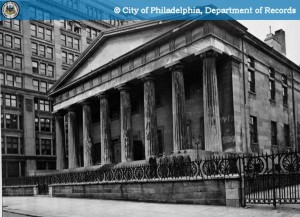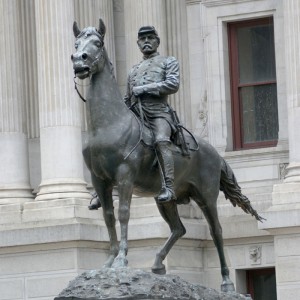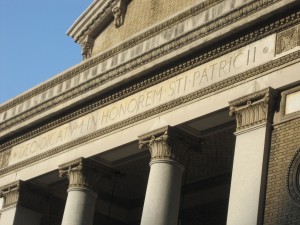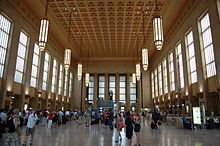In my last post, I promised to say something about “vernacular classicism.” By that I meant receptions of ancient Greece and Rome by people other than the elite in a society. If Classicizing Philadelphia doesn’t include those non-elite receptions, it will be just another exercise in prosing on about the glory that was Greece and the grandeur that was Rome. People will nod politely and go about their business, and they will continue to assume that Greece and Rome are somehow the cultural property of the elite.
But who is elite? And who isn’t? Defining “elite” and “non-elite” turns out to be a difficult business. Using a criterion like income, it’s not hard to distinguish extremes—but where do we draw the boundary? (Usually, somewhere just above where we think we are.) How do we take account of power or influence that isn’t correlated with high income?
The best I can do at this point is offer a typology with examples. It’s crude and empirical, but at least it’s a start toward understanding what I mean by “vernacular classicism.”
1. Elite receptions for non-elite users. In Philadelphia, think of Horace Trumbauer’s pair of neo-classical public buildings on Logan Circle: the Free Library and former Family Court Building. Trumbauer built his practice on the patronage of the Philadelphia’s elite and designed mansions for them, including the Widener and Elkins families. Peter A. B. Widener, then vice-chair of the Free Library’s directors, was instrumental in commissioning Trumbauer to design the library’s building. From its opening, the building was seen as an icon of culture. A local newspaper saw its function: “The building at Logan Circle is far more than a book storage, to which the public can go to read and borrow. It has unique facilities for the spread of culture. Properly supported, it will perform service of incalculable value.”
2. Non-elite receptions for elite users. This is the first category from the other side—the Free Library as seen by a draftsman in Trumbauer’s office. It’s easiest to recognize in the work of painters, who often (but not always) belong to a non-elite stratum of society but who control the content and execution of the work they do for elite patrons. John Vanderlyn (1775–1852) came from a family of artisan painters; his father was a dealer in art supplies. If Aaron Burr had not noticed him, he might have remained in obscurity in upstate New York; instead, his neo-classical and academic paintings, like Ariadne Asleep on the Island of Naxos at PAFA, earned him fame and the patronage of nineteenth-century elites in government and art.
3. Non-elite receptions for non-elite users. These are in some ways the most interesting and the hardest to document, especially in the 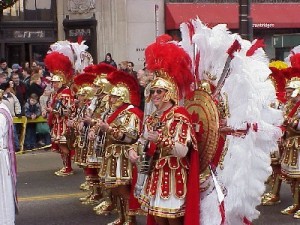 historical record. Any street of row houses in North or West or South Philadelphia will have porches or entryways whose paired, Doric or Tuscan columns support a triangular pediment. These are the work of journeyman architects or builders working from pattern books, and their names are hard to find—but they reflect someone’s taste. Hardly a Mummers’ Parade goes by without at least one string band riffing on Rome or ancient Greece. In nineteenth-century Philadelphia, middle- and upper-class patrons streamed to the elite Arch Street, Chestnut Street, and Walnut Street Theaters to enjoy divas like Adeleide Ristori in the title role of Ernst Legouvé’s Medea, but in 1870 Duprez and Benedict’s Minstrels could draw a crowd to their theater at 47-49 North Seventh Street for a skit called “Medea, or Ristori Restored.” This non-elite reception has left no trace except for a tiny ad in the Philadelphia Evening Telegraph.
historical record. Any street of row houses in North or West or South Philadelphia will have porches or entryways whose paired, Doric or Tuscan columns support a triangular pediment. These are the work of journeyman architects or builders working from pattern books, and their names are hard to find—but they reflect someone’s taste. Hardly a Mummers’ Parade goes by without at least one string band riffing on Rome or ancient Greece. In nineteenth-century Philadelphia, middle- and upper-class patrons streamed to the elite Arch Street, Chestnut Street, and Walnut Street Theaters to enjoy divas like Adeleide Ristori in the title role of Ernst Legouvé’s Medea, but in 1870 Duprez and Benedict’s Minstrels could draw a crowd to their theater at 47-49 North Seventh Street for a skit called “Medea, or Ristori Restored.” This non-elite reception has left no trace except for a tiny ad in the Philadelphia Evening Telegraph.
That’s why the work being done at Monument Lab during these past three weeks has been important. It democratizes the process of monument making; in my typology, it moves it from category one or two to category three. Can the result be a monument that includes and continues Philadelphia’s non-elite receptions of Greece and Rome?


